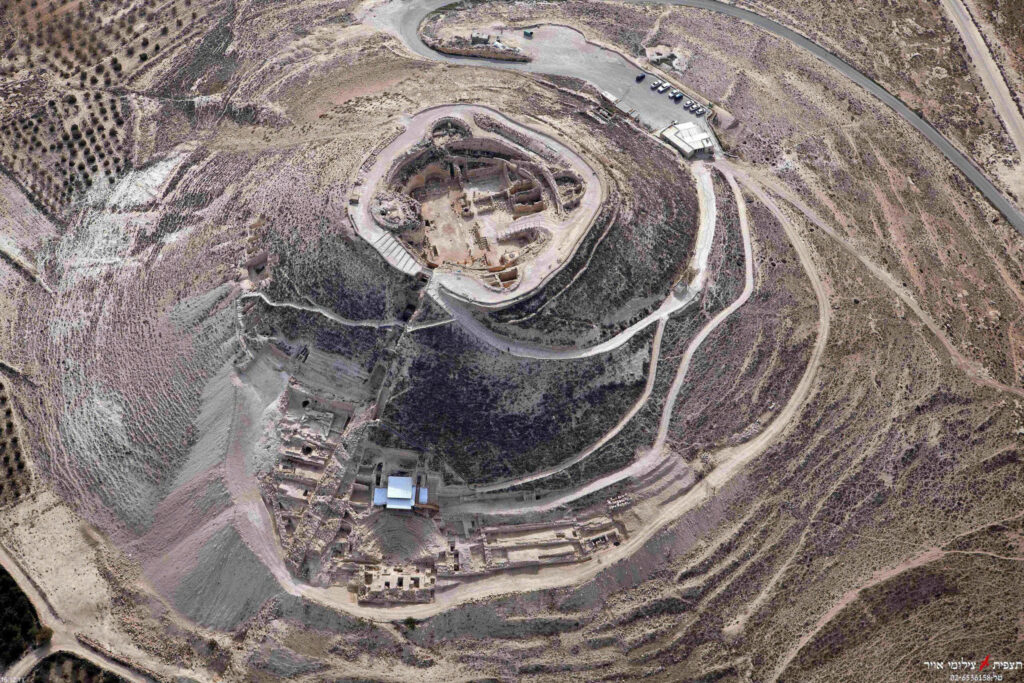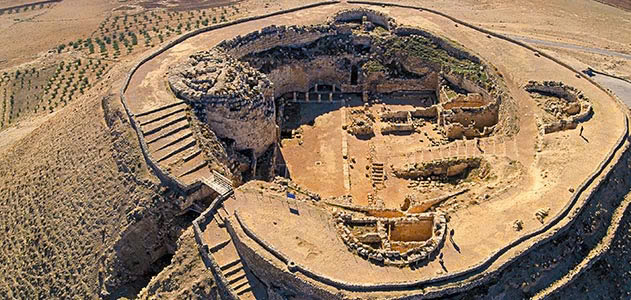Majesty Rediscovered: New Findings Reveal the Grandeur of King Herod’s Palace at Herodium
Rising from the arid ridges of the Judean Desert, just southeast of Bethlehem, the ancient site of Herodium remains one of the most remarkable landmarks tied to the reign of King Herod the Great. Though its striking silhouette has long been recognized, new excavations and ongoing conservation projects continue to deepen our understanding of the palace-fortress that Herod once called his desert jewel.
Herodium — or Herodion, as it is sometimes known — was constructed between 23 and 15 BCE as a royal retreat, administrative center, and ultimately a monumental memorial for the king himself. Today, the site stands as one of the most important archaeological windows into the political ambition, engineering innovation, and architectural creativity that defined Herod’s legacy.
A Palace in the Desert: History and Setting

Herodium occupies a strategic hilltop that overlooks sweeping desert landscapes toward the Dead Sea and the Judean Hills. Its location reflects a blend of symbolism and practicality. For Herod, constructing a grand palace in such a challenging environment was not only a demonstration of power but also a statement of control over the region.
Ancient historians, including Josephus, described Herodium as one of Herod’s most personal projects, and the king reportedly took great pride in its construction. The site served as both a royal residence and a commemorative complex, intended to reflect his authority and taste.
Architectural Splendor in the Heart of the Judean Desert
Visitors approaching Herodium are greeted by remains that highlight the sophistication of Herodian architecture. Archaeologists have uncovered:
-
Luxurious residential quarters that once housed members of the royal circle
-
A large triclinium (banquet hall) used for official gatherings and ceremonial feasts
-
Elaborate bathhouses, complete with advanced heating systems characteristic of Roman engineering
-
Elegant courtyards and garden areas, providing shade and comfort in the desert climate
These features reveal Herod’s fascination with combining Roman-style grandeur with local building traditions, transforming a remote hilltop into a palace of unexpected luxury.
The upper palace was complemented by extensive lower structures, including storage rooms, administrative spaces, a monumental staircase leading up the slope, and a vast pool complex that would have served as a striking visual and recreational element.
A Fortress Designed for Beauty and Defense

While Herodium is often remembered for its architectural lavishness, its strategic design reflects its dual function as a defensive stronghold. Built atop an artificially shaped hill, the fortress offered clear visibility across surrounding valleys, allowing Herod’s forces to monitor movement and maintain control over nearby routes.
Defense features included high circular walls, towers integrated into the upper palace, and a layout engineered to slow and deter potential invaders. Yet even in its defensive elements, the site balances practicality with the aesthetic refinement that characterizes Herodian construction.
Rediscovering Herod’s Tomb
One of the most fascinating aspects of Herodium is its association with Herod’s burial. Ancient texts long suggested the site served as the king’s final resting place, but the tomb’s exact location remained unidentified for centuries.
In 2007, archaeologist Ehud Netzer and his team announced the discovery of what they believed to be Herod’s mausoleum on the mountain’s slope. Although debate continues regarding certain interpretations, the structure’s scale, decoration, and placement strongly support its connection to Herod’s burial plans.
The tomb’s design aligns with the king’s vision of creating a lasting landmark — a monumental tribute overlooking the desert terrain he sought to shape.
Herodium in Modern Archaeology

Today, Herodium functions not only as a historical site but also as an active archaeological research area. Conservation efforts are ongoing, revealing additional corridors, hidden staircases, and even underground tunnels used during later periods, such as the Bar Kokhba Revolt.
These findings enrich our understanding of how the site evolved long after Herod’s time. The blend of early Roman design, later engineering expansions, and ancient cultural layers makes Herodium a multi-period archaeological treasure.
For visitors, walking through the site offers a remarkable experience:
-
standing inside reconstructed vaults,
-
exploring the slope leading toward the mausoleum,
-
viewing panoramic landscapes from the summit,
-
and examining preserved architectural details that reflect both grandeur and technical mastery.
A Legacy of Innovation and Influence
While Herod the Great is often remembered for his ambitious and sometimes contentious rule, his architectural achievements remain among the most impressive in the region. Herodium, along with other major constructions such as the Temple Mount expansions and the port city of Caesarea Maritima, showcases his drive to reshape the Judean landscape.
The palace-fortress stands as a testament to how architecture was used not only for practical defense or comfort but also as a vehicle for political expression and personal legacy.
Herodium Today: A Window Into the Past
As excavations continue and new technologies allow for more detailed study, Herodium remains a vital site for scholars and visitors alike. Its preserved structures offer rare insights into the daily life, engineering capabilities, and artistic preferences of a pivotal era in Middle Eastern history.
For modern travelers, Herodium provides an immersive step into the world of King Herod — a place where desert horizons meet monumental architecture, and where the echoes of ancient history still shape contemporary understanding of the region.
